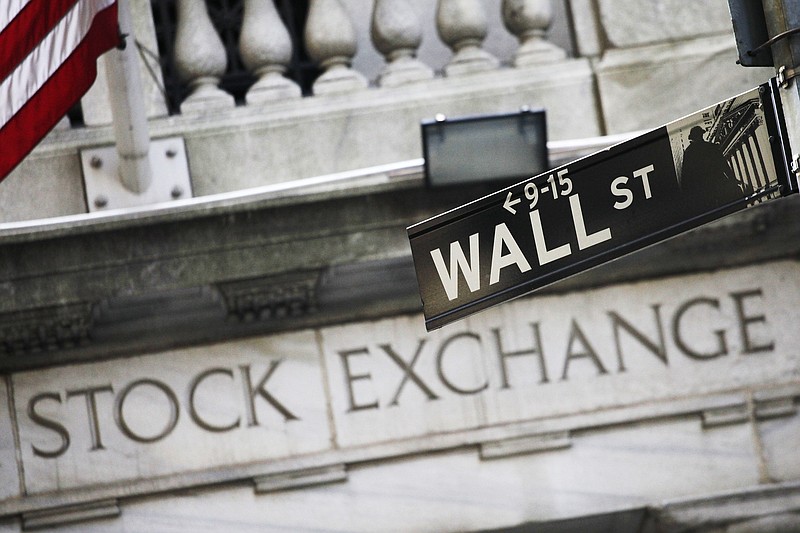The beginning of 2022 has been a nightmare for bond investors. With the Federal Reserve raising interest rates aggressively to fight inflation, bond prices have taken a dive in response, reminding investors once again that there is no free lunch. The broad U.S. aggregate bond index has lost nearly 11% so far this year, and investors pulled cash from bond funds for the first four months of the year. The year 2022 has been the worst period for bond investors since 1842, leading many pundits and even some money managers to eschew the traditional 60/40 portfolio. Events may prove the obituaries to be premature.
The "60/40 portfolio" is a convenient if overly broad shorthand for a moderate asset allocation of 60% in stocks and 40% in bonds. It is not a magic formula but a rough classification within which there can be substantial variation in both the stock and bond selections. For example, each investor or their manager must choose corporate versus government bonds, maturity, tax status (taxable versus municipal), credit ratings, country of issuance, and so forth. Sweeping generalizations regarding the futility of holding fixed income in a portfolio based upon short-term developments can reinforce many individual investors' impulse to overreact and lose sight of the longer-term imperative to diversify their holdings for success over time.
It is certainly fair to observe that the longest bond bull market in modern history, beginning in 1981, came to a screeching halt last year. To contain runaway inflation of 14%, the Fed in 1981 aggressively hiked interest rates throughout the year until the 10-year US Treasury yield reached a blistering 15.8%. The bitter medicine worked, rapidly bringing down inflation and allowing 10-year bond yields to commence a 40-year rolling decline to the all-time low of 0.54% in 2020.
As most investors have recently been reminded, bond prices move in opposition to yields. A bond issued in 1981 with a fixed 15% coupon interest rate became significantly more valuable as market yields declined to 10%. With inflation well controlled and interest rates falling steadily, bond prices soared between 1981 and 2020 with a few setbacks along the route.
A major selloff in 1994 was dubbed "the Great Bond Market Massacre" by Fortune magazine. During that year, the Federal Reserve raised its benchmark interest rate by 2.5 percentage points, catching many bond investors off guard. The 10-year yield rose from 5.6% to over 8% by November, triggering a 10% decline in bond prices. Yet by the end of December, the overall bond market was only down 3%. Today the "Great Massacre" is barely remembered as a blip in the 40-year bull run.
The difference today is the starting level of rates. The Fed has raised its benchmark by 1.5 percentage points so far this year but from a historically low base. The 1994 hike from 3% to 5.5% amounted to an 83% change in the Fed Funds rate. By contrast, the Fed's smaller move this year from 0.08% to the current 1.58% effective rate represents a 1,875% jump since the beginning of the year. Context matters, a lot.
The great bull market in fixed income ground to a halt with the recent Fed action to temper the current 8.6% inflation rate, leading many commentators to proclaim the demise of bond investing, or at least to advocate for a much lower allocation to bonds in favor of stocks, commodities, or other asset classes instead of fixed income. Perhaps the most frequently offered advice is the somewhat anodyne "buy high quality dividend paying stocks." This is certainly tempting and has the additional benefit of having worked for the first few months of 2022. But dividend stocks are also impacted by rising interest rates, and no matter the quality, stocks are not bonds and are riskier than bonds. Bonds can and do fluctuate in price with rates, but investment-grade issues have a fixed and known cash flow profile including the full return of principal at maturity. Astute investors will certainly adjust the characteristics of the bonds within their allocation in terms of maturity and quality, but a well-diversified portfolio still includes fixed income for an anchor to windward over the long haul.
Meanwhile, just as the drumbeat for abandoning bonds grows louder, the return profile for fixed income is brightening. Higher interest rates also mean more attractive income payments from bonds than the thin gruel of 2020. And the traditional inverse correlation between bonds and stocks, absent so far in 2022, seems to be returning as stock investors seek the traditional safe haven of bonds in a bear market and possibly the early innings of a mild recession. In fact, bond prices have rallied somewhat with the continuing stock selloff, the past week notwithstanding. High grade bond funds are now yielding close to 5%, well in excess of average dividend yields. And while more rate hikes are certainly ahead, the consensus forecast by Fed economists expects rates to decline again in 2024 or 2025, or perhaps sooner if the recession is deeper than expected.
Retirement investors contemplating bailing out of bonds now might be preparing for another round of sell low and buy high, a less than optimal strategy. An appropriate allocation to fixed income over a longer time horizon remains appropriate for most moderate investors. 60/40 (or any allocation) should of course be monitored and tweaked, but the reports of its demise have been greatly exaggerated.
Christopher A. Hopkins if a chartered financial analyst and co-founder of Apogee Wealth Partners LLC.
